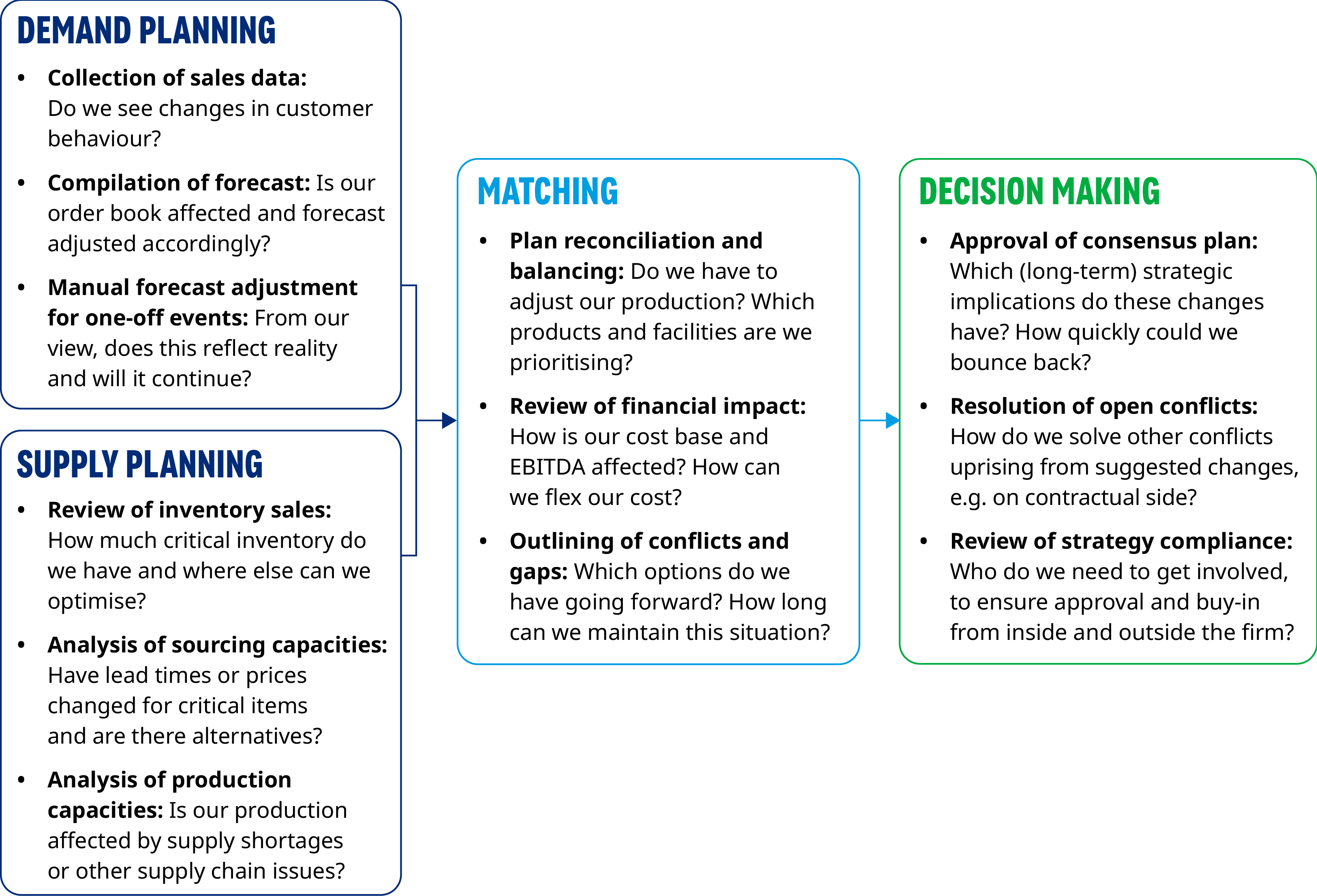Businesses are facing a perfect storm. Not only are they looking at falls in demand due to consumers tightening their belts, but they are also witnessing significant shortages in supply driven by global supply chain interruptions. The situation has been compounded by inflation reaching a forty-year high, with costs skyrocketing and markets imposing significant increases in the cost of capital. The result is a combination of business challenges almost unprecedented in scale and complexity.
Maybe the greatest risk for companies is that, left unchecked, these difficulties could lead them into a downward spiral. Without stable sources of supply, production will inevitably be hit further, resulting in even lower sales. Higher inventory levels will lead to additional cost increases and, due to demand constraints, create obsolescence, adding to the already troublesome impact created by the shrinking market.
The C-suite needs to act quickly to prevent events taking control. Our experience suggests that supply chain management, and especially sales, inventory and operations planning (SIOP) can play a critical role in managing the way forward, providing transparency on the data required to guide through the forthcoming recession.
SIOP’s role in answering critical questions
SIOP gives the C-suite a handle on the complex data that can help them better understand the nature of the likely changes in demand well in advance of them happening.
It provides insights into critical changes on the demand side, such as negative market indicators over the past weeks, adjustments of customer orders and the likely impact of a reduced demand on the company’s pipeline and forecast. Similarly, on the supply side, SIOP helps to understand potential sourcing issues with suppliers or changes in lead times which, if not solved with alternative sources of supply, might affect inventory and production planning alike.
Good SIOP processes not only consider current costs but provide insight into changes of underlying cost structures as a consequence of the changes the C-suite is making to manage future supply and demand.
The SIOP process enables the business to interpret complex data about demand and supply, enabling better forecasting of potential production challenges. This matching process helps translate the data into an actionable plan, including providing guidance on whether to ramp-up or ramp-down production. This will enable operations to flex costs in production and distribution accordingly. (See Exhibit 1.)

With a recession looming, such knowledge is critical for helping the C-suite to identify the likely impact on financials, as well as where adjustments will be required in their production plans. This vital information also enables operations, procurement, and the commercial teams to ask the right questions about upcoming challenges and jointly take action to secure the company’s market position.
The benefits outweigh the challenges of implementation
Implementing SIOP is not a simple matter. Getting it right requires aligning processes, tools, governance, KPIs, and data systems across commercial, operations, finance, and procurement, not just once but in all critical facilities and regions. Despite the challenges involved, the reasons for taking on its implementation are clear: companies that build a solid SIOP process typically see less lost revenue, have lower inventory levels, and can flex their costs better – all essential for finding a safe path through recession. This is a solid reason why developing SIOP often proves a shrewd investment. If your C-suite has yet to start on SIOP, there is no better time than the present.

